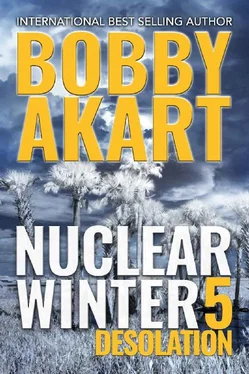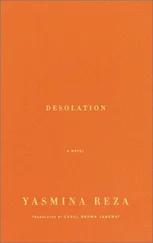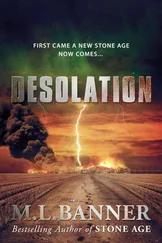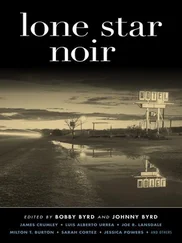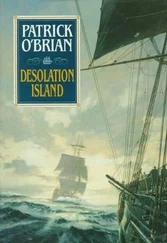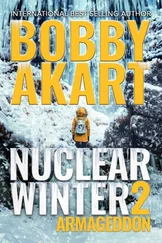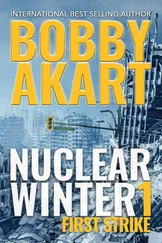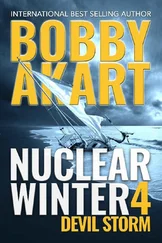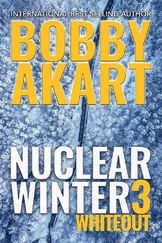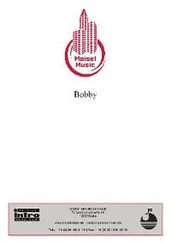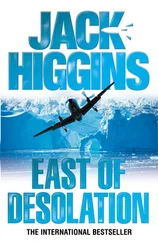Near them were members of the clergy led by Reverend Deb. They were from all denominations, creeds and colors. They were calm, carrying the power of God in their hearts.
Mayor Juan Ramirez, his wife, Lisa, and the mayors of Islamorada and Key Largo were next. They smiled and nodded at Hank, giving him a thumbs-up and fist pumps.
The emotional scene swept over the residents of Driftwood Key. Weeks of trial and tribulation had come to a head. They’d set out to confront Lindsey, fully expecting that this might be a fight they couldn’t win. They’d expected Jock’s deputies to raise their weapons and even kill them on her orders.
However, today was not their day to die. It was their day to start a new life. As the new arrivals surrounded the Albrights and Frees, the power of their spirit and energy engulfed Hank. He accepted their gracious show of support.
He set his jaw, took a deep breath, and turned to Lindsey. He was about to speak when something remarkable happened.
Sheriff Jock Daly walked away from Lindsey and joined Hank by his side. He adjusted his uniform and confidently turned to face his soon to be former lover.
“Enough is enough, Lindsey. No more.”
Next, Sergeant Rivera crossed the imaginary line in the sand that stretched from one side of U.S. 1 to the other, pointing directly at Fred the Tree, the symbol of the Florida Keys’ resiliency. He was followed by the entirety of his elite SWAT team who’d carried out Lindsey’s demands.
With a defeated look on her face, yet still unabashedly proud enough to hold her head high in utter defeat, Lindsey spun on a dime and marched away between the massive blades of the front loaders designed to clear a path for her. Now, the only path she could follow was back to Key West, where she would resign in disgrace.
As soon as she got in her car and drove off, the tensions eased, and everyone, all thousand-plus, cheered. They cried. They celebrated. And for an afternoon, they forgot they were in the midst of the apocalypse.
They were Conchs once again.
THANK YOU FOR READING NUCLEAR WINTER: DESOLATION !
If you enjoyed it, I’d be grateful if you’d take a moment to write a short review (just a few words are needed) and post it on Amazon. Amazon uses complicated algorithms to determine what books are recommended to readers. Sales are, of course, a factor, but so are the quantities of reviews my books get. By taking a few seconds to leave a review, you help me out and also help new readers learn about my work.
Sign up to my email list to learn about upcoming titles, deals, contests, appearances, and more!
Sign up at BobbyAkart.com
VISITmy feature page at Amazon.com/BobbyAkartfor more information on my other action-packed thrillers, which includes over fifty Amazon #1 bestsellers in forty-plus fiction and nonfiction genres.
READ ONfor my AUTHOR’S NOTEas I share some final thoughts on the NUCLEAR WINTERseries and to see what’s coming next— BLACK GOLD, book one in the TEXAS FOREVERseries, available on Amazon.
June 14, 2021
It has been six years to the day since I published my first novel, THE LOYAL NINE, book one of the Boston Brahmin series. I have written about a wide variety of potential catastrophic events, all of which have a basis in scientific fact or have occurred in our planet’s history. With the Nuclear Winter series, like my other novels, my goal was to introduce readers to the potential threats we face following a nuclear exchange and what to expect as the events unfold. Through the experiences of my fictional characters, I hoped to let you imagine the scenario for yourselves and play it out in your mind so that you’ll be prepared when catastrophe strikes. Each event is unique in its own way, and nuclear winter ranks alongside the eruption of the Yellowstone supervolcano in its potential to devastate the planet.
I started this series with a basic premise, a warning of sorts:
Nuclear war may kill millions.
Nuclear winter will kill billions.
Preparing society for something of this magnitude would be near impossible. It’s the kind of worst-case scenario that politicians talk about in hushed tones while in private and the general public cannot fathom. As a result, the potential for nuclear winter is accepted as scientific fact. However, like so many other catastrophes I write about, the world crosses its fingers and prays it never happens.
Here are the salient points of my research that I hoped to have conveyed to readers in the Nuclear Winter series.
While it is true that millions at ground zero of the detonation would perish, in the aftermath, hunger and starvation would plague the survivors of a nuclear war. Millions of people would starve to death in the first few years following an all-out nuclear war.
World food reserves at any given time would be frighteningly small should production fail. They have amounted in recent years to about two months’ supply at present consumption rates. In the United States, food stores would feed the population for less than a few months subject to distribution constraints.
The means to transport the food from sites of harvest or storage to the consumers would no longer exist. Transportation centers would be shut down. Roads, bridges, as well as rail and port facilities, would likely be rendered inoperable.
A breakdown in agribusiness would be an inevitable consequence of a nuclear war. Without the means to harvest, process, and distribute those crops that survived, there would be much spoilage.
So much of the social and economic structure of society as we know it would be destroyed. Relationships that we take for granted would disappear. Money would have little or no value. Food and other necessities would be obtained, when available, by barter.
More likely, as people became desperate with hunger, survival instincts would take over. Armed individuals or marauding bands would raid and pilfer whatever supplies and stores still existed. Those fortunate individuals who had the means would hoard their resources and soon become the victims of the crazed behavior of starving and desperate survivors who would ransack warehouses and attack individual homes.
Law enforcement would not exist, and many would be killed in the fighting between those trying forcefully to obtain possession of food and those trying to protect their own homes, families, and food supplies.
A reduction in average temperature by even 1°C at the Earth’s surface because of the absorption of solar energy by soot and dust in the atmosphere would shorten the growing season in northern latitudes and markedly reduce or prevent maturation and ripening of grains that are the staple of human diets.
But the debates that have been heard are not of whether a nuclear winter would occur but how many tens of degrees the temperature would be reduced and for how long. During most of the growing season, a sharp decline in temperature for only a few days may be sufficient to destroy crops. The lack of rain that has been predicted after nuclear winter settles in would contribute to crop failures. Since most of the wheat and coarse grains are grown in the temperate regions of the Northern Hemisphere, which would be the zones most affected by a nuclear winter, it is evident that a nuclear war, especially during the spring or summer, would have a devastating effect on crop production and food supplies for years.
After the atmospheric soot and dust finally clear, the destruction of the stratospheric ozone would allow an increase in hard ultraviolet-B (UV-B) rays to reach the Earth’s surface. In addition to the direct harmful effects to the skin and eyes of humans and animals, these hard ultraviolet rays would be damaging to plant life and would interfere with agricultural production. If the oxides of nitrogen increase in the troposphere, there may occur an actual increase of ozone at the lower levels of the atmosphere. Ozone is directly toxic to plants.
Читать дальше
